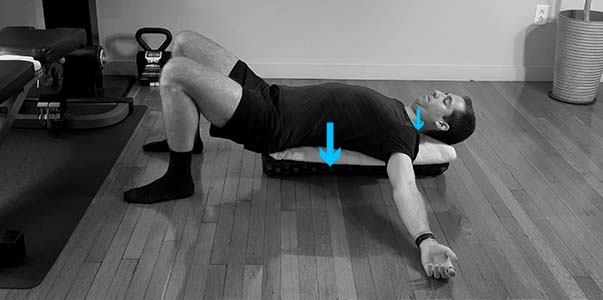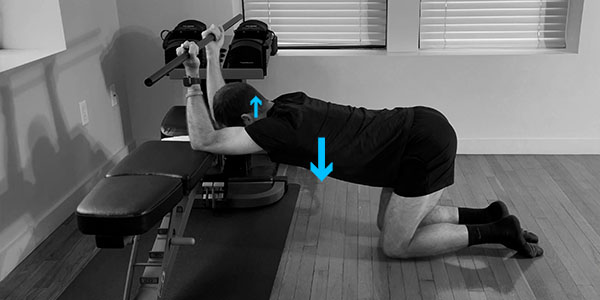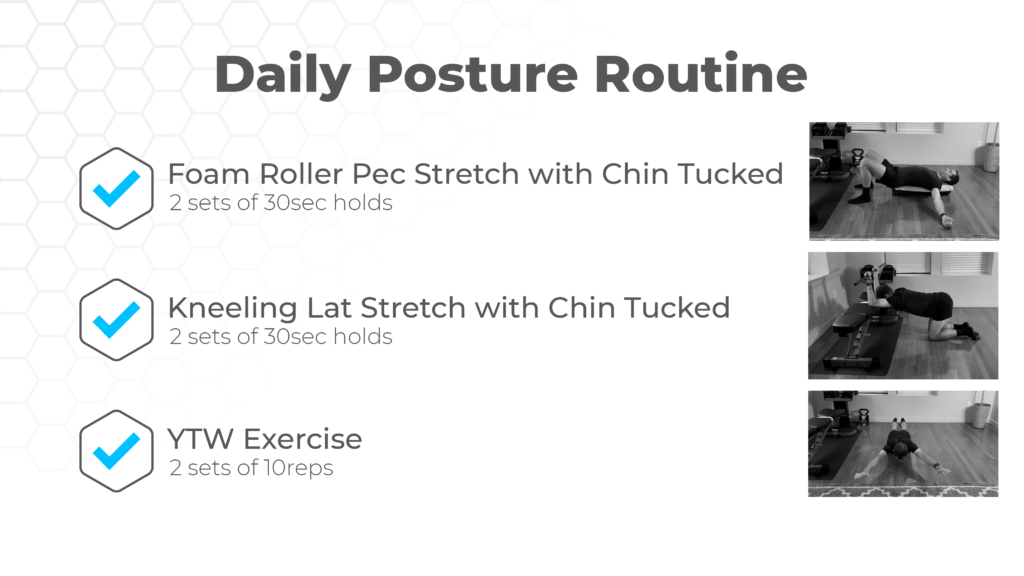I partially tore both rotator cuffs due to poor head and shoulder posture. I could barely raise my arms. But correcting my neck and shoulder alignment has relieved all pain and limitations. I wish I had done this earlier. What causes poor upper body posture? Can a corrective exercise routine fix it? And what exercises can you do to prevent issues like mine? Well, let’s get into it!
Upper Crossed Syndrome
Upper crossed syndrome is a postural and muscular misalignment issue as defined by Doctor Vladimir Janda [1]. You may know this as tech neck. The head juts forward while the shoulders round. It’s this poor upper body posture we resist but can’t maintain. It doesn’t look attractive. It’s not good for long term muscle and joint health. And it’s what increased my susceptibility of two torn rotator cuffs. Upper crossed syndrome is an issue to be fixed. I wish I would’ve known this before bigger issues materialized.

Janda stated that the syndrome occurs when a slouched sitting posture is sustained for a prolonged period [2]. This poor posture weakens deep neck flexors and the mid back which normally hold us upright. It also creates a tight chest and upper traps which satisfy our slouch. This muscular imbalance is why you can’t maintain good posture. Some of your muscles are too weak. Others are too tight. It’s too much effort to stand or sit up straight. But what if this muscular imbalance didn’t exist? What if good posture was your default posture?
Corrective Posture Routine
With certain exercises to strengthen the weak muscles, and stretches to loosen the tight ones, upper crossed syndrome can be treated [2]. I learned about this earlier this year when completing a corrective exercise certification program. Now I can identify and correct poor posture. Unfortunately, most of this knowledge was acquired at the same time as my physical therapy late last year after my injuries. Six months of PT and 12 months of at-home work finally has my shoulders healthy again. Symptom free. But I plan to keep up this routine for a lifetime of healthy joints and muscles.
Here is the daily stretch and exercise routine I found for correcting poor head and neck posture.
Foam Roller Pec Stretch with Chin Tucked
The first stretch I perform lengthens the tight pectoral and neck muscles. First, lay down on a foam roller so that your head and back are supported. Keep your chin tucked and back flat. Next, with your arms wide open, relax and let your hands hit the floor. You should feel this in your chest. Hold this stretch for thirty seconds and repeat two times. As you get more flexible, move your arms more overhead.

Kneeling Lat Stretch with Chin Tucked
The second stretch I perform lengthens tight lats while strengthening weak neck flexor muscles. For this exercise, a bench and pole are recommended. Start by kneeling a few feet away from the bench. Hold the bar with an underhand grip. Place both elbows on the bench while pulling your chest to the floor. Finally, tuck your chin like you’re pulling it up towards the ceiling. This provides a stretch and exercise simultaneously. Hold this stretch for thirty seconds and repeat two times.

YTW Exercise
The third and final exercise I perform strengthens weak mid back muscles. Start by lying flat on your stomach. Raise both arms off the floor overhead in a “Y” position. Next, move both arms out laterally to make a “T.” Finally, tuck the elbows to your sides to form a “W” and repeat this process. The focus should be squeezing your shoulder blades together and down towards your butt. Repeat this process slowly for ten repetitions and two sets. When this becomes easy, progress to 1lb dumbbells.

Disclaimer
These are three exercises and stretches I attempt to do each night before bed. They helped get me to optimal posture and should prevent future problems. But if you have a shoulder or neck injury, a routine more intense and specific than this is required to fix it. You should see a physical therapist for any injury or chronic pain.

Final Thoughts
More sitting can lead to more muscular imbalances. These imbalances lead to poor posture like tech neck. It’s postural issues like these that put my shoulders and neck in a vulnerable position. That position led to two torn rotator cuffs while exercising at the Warrior Factory. Rotator cuffs that would’ve been fine if I’d corrected this issue before it manifested. Luckily, through the help of multiple physical therapists and my certification program, my shoulders are feeling great! These daily stretches and exercises are what I’m using to maintain healthy shoulders forever. This is my latest habit for health excellence.

